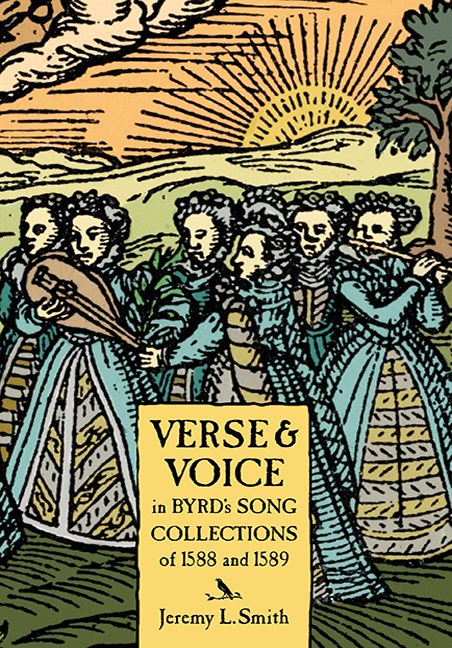Book contents
- Frontmatter
- Contents
- List of Figures
- List of Music Examples
- Preface and Acknowledgements
- Editorial Conventions
- Introduction
- CHAPTER 1 Psalmes
- CHAPTER 2 Sonets & Pastoralls, I
- CHAPTER 3 Sonets & Pastoralls, II
- CHAPTER 4 Sonets & Pastoralls, III
- CHAPTER 5 Songs of sadnes and pietie
- CHAPTER 6 Songs of Three Parts
- CHAPTER 7 Songs of Four Parts
- CHAPTER 8 Songs of Five Parts
- CHAPTER 9 Songs of Six Parts
- Conclusion
- Select Bibliography
- Index
- Studies in Medieval and Renaissance Music
CHAPTER 5 - Songs of sadnes and pietie
Published online by Cambridge University Press: 05 July 2016
- Frontmatter
- Contents
- List of Figures
- List of Music Examples
- Preface and Acknowledgements
- Editorial Conventions
- Introduction
- CHAPTER 1 Psalmes
- CHAPTER 2 Sonets & Pastoralls, I
- CHAPTER 3 Sonets & Pastoralls, II
- CHAPTER 4 Sonets & Pastoralls, III
- CHAPTER 5 Songs of sadnes and pietie
- CHAPTER 6 Songs of Three Parts
- CHAPTER 7 Songs of Four Parts
- CHAPTER 8 Songs of Five Parts
- CHAPTER 9 Songs of Six Parts
- Conclusion
- Select Bibliography
- Index
- Studies in Medieval and Renaissance Music
Summary
ON the title page of his Psalmes, sonets and songs Byrd described the third section of the book as “songs of sadnes and pietie” (BE 12., p. xli). Here, as elsewhere, Byrd's title does not serve as a completely reliable guide to the nature of the set's contents. It might easily be assumed that the phrase “sadness and piety” applies to all nine songs in this final section, but a cursory study of the poems suggests that five songs are devoted to “piety” (BE 12: 27–31) and four to “sadness” (BE 12: 32–35) – reversing the topic order as stated on the title page. The point of discrepancy, however minor it might seem, perhaps reflects Byrd's general unwillingness to reveal his organisational method.
As mentioned in the previous chapter, Byrd was most explicit about his contents when he dubbed the last two works of the entire collection “funerall songs of Sir Philip Sidney” (BE 12: 34–35). These works were the last two of a group of four related songs, all of which develop a theme related to sadness but that are more specifically concerned with death and martyrdom. The death element relates to feelings of loss and the urge to memorialize, but the martyrdom component suggests something else. Martyrdom – especially in the case of a person who died for his or her beliefs – was considered the ultimate act of fortitude in a Christian configuration of the virtues.1 Fortitude was also one of the gifts of the Holy Spirit, which is significant for our purposes, as it shares this dual status with piety. Through this exploration of martyrdom Byrd reached back to the topic of virtues that he explored in the middle, “sonets and pastoralls,” section of his book as he now develops further a new theme of the holy gifts.
Meanwhile, the opening works on piety in this section present a departure from the largely secular and often humorous songs of the preceding part. Not only is there a strong shift in theme and tone at this juncture; Byrd also reconfigured his grouping pattern, placing five rather than the usual four songs in this section.
- Type
- Chapter
- Information
- Verse and Voice in Byrd's Song Collections of 1588 and 1589 , pp. 107 - 133Publisher: Boydell & BrewerPrint publication year: 2016

